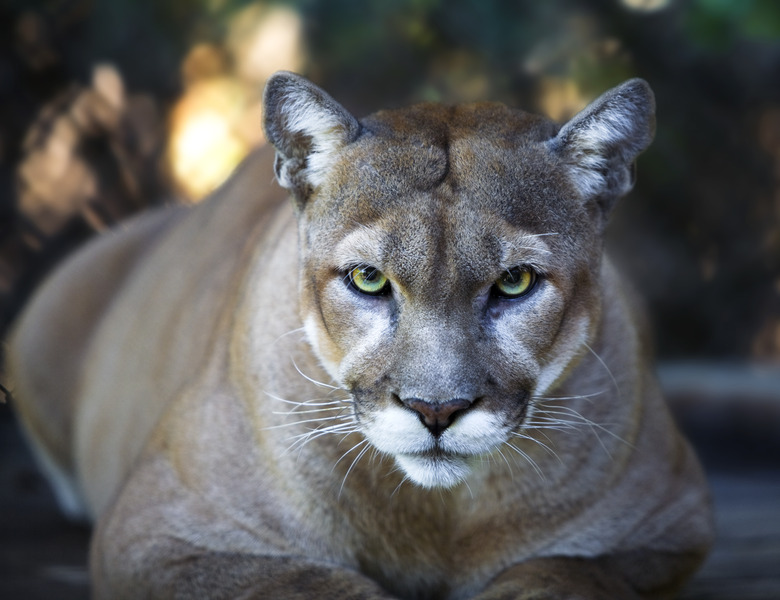The Adaptations Of The Puma
The puma, or puma concolor, is also known by other names, such as cougar and mountain lion. Pumas have inhabited a variety of regions throughout North and South America, and those that live in colder climates migrate during the winter. Pumas are territorial and mark their habitats. Although pumas may hunt either at night or during the day, they are rarely seen by humans. These skillful predators are solitary and secretive.
Agility
Agility
Pumas are extremely agile, with features that help them to jump, run, pounce, climb and swim effectively. Strong legs allow the puma to jump up to 40 feet forward or 18 feet into the air. These animals are also very fast, reaching speeds up to 35 miles per hour when running. A flexible spine enables the puma to change direction quickly and effectively during these sprints. Pumas are also adept climbers, a skill that is useful when hiding in trees to escape predators, such as wolves.
Paws
Paws
A puma has four claws on both of its back paws and five claws on each of its front paws. These claws are retractable. The puma uses its claws to clutch at its prey when hunting but retracts them to make walking easier and to prevent them from becoming blunted. Pumas' paws leave only very slight tracks on the ground. This helps the animals to remain hidden from predators and prey.
Stalking
Stalking
Pumas are carnivorous and hunt virtually any mammal and, occasionally, other animals, such as fish. These secretive animals are skillful stalkers. Their highly developed vision and sense of hearing play an important role in their ability to stalk prey effectively. Pumas hide in vegetation and rocky areas when they are stalking. Before attack, the puma will remain hidden with ears pointed up, eyes on its prey and its body crouched ready to pounce. It may also hide in a tree, ready to jump down onto its prey.
Attack
Attack
Pumas are perfectly adapted to hunt and kill their prey swiftly. Puma cubs will begin to hunt their own prey from the age of 6 months, although cubs hunt much smaller animals to begin with. When a puma is ready to attack, its uses its strong hind legs to pounce at its prey. Its front legs are longer than its hind legs, allowing it to use them for holding onto its prey. The puma jumps onto its prey's back and quickly uses its strong neck and jaw muscles to bite into the prey's neck. The flexible spine also helps a puma to carry out this attack.
Cite This Article
MLA
Ames, Hayley. "The Adaptations Of The Puma" sciencing.com, https://www.sciencing.com/adaptations-puma-8497983/. 22 November 2019.
APA
Ames, Hayley. (2019, November 22). The Adaptations Of The Puma. sciencing.com. Retrieved from https://www.sciencing.com/adaptations-puma-8497983/
Chicago
Ames, Hayley. The Adaptations Of The Puma last modified March 24, 2022. https://www.sciencing.com/adaptations-puma-8497983/
